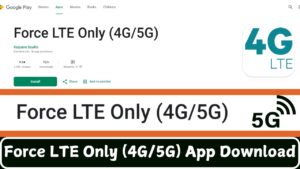Network technology, bringing faster speed
The Transition from 4G to 5G: A 600-Word Summary
The transition from 4G to 5G represents a significant leap in mobile network technology, bringing faster speeds, lower latency, and increased capacity, which will transform industries and everyday life. While 4G enabled mobile apps, HD streaming, and fast downloads, 5G will open the door to new possibilities, including virtual reality (VR), autonomous vehicles, and the Internet of Things (IoT).

Key Differences Between 4G and 5G
1. Speed:
One of the most notable differences between 4G and 5G is speed. 4G networks typically offer download speeds between 10 to 100 Mbps, while 5G can reach up to 10 Gbps, making it 100 times faster than 4G. This increase in speed will benefit applications that demand high data rates, such as 4K and 8K video streaming, cloud gaming, and other data-heavy tasks.
2. Latency:
Latency refers to the time it takes for data to travel from one point to another. With 4G, latency ranges from 30 to 50 milliseconds, but 5G reduces it to as low as 1 millisecond. This almost instantaneous response time is critical for applications that require real-time communication, such as autonomous vehicles, remote surgeries, and augmented reality (AR).
3. Network Capacity:
4G networks often face congestion in densely populated areas, but 5G increases network capacity significantly. This allows millions of devices to connect simultaneously without a loss in performance, which is essential for the growing number of IoT devices, smart homes, and connected cars.
4. Energy Efficiency:
5G networks are more energy-efficient than 4G, extending battery life for mobile devices and reducing costs for network operators. The improved efficiency of 5G will benefit both consumers and service providers, especially in industries that require constant connectivity, such as healthcare and transportation.
Technologies Powering 5G
Millimeter Waves:
5G operates on higher frequency bands, known as millimeter waves (mmWave), which allow it to transmit more data at faster speeds. These waves, however, have a shorter range and can be blocked by obstacles like buildings, so 5G requires a more extensive infrastructure of small cell towers to ensure good coverage.
Massive MIMO:
Massive Multiple Input Multiple Output (MIMO) technology enables 5G networks to transmit and receive multiple data signals at once, increasing the overall network capacity. This helps achieve the high speeds and low latency that 5G promises, especially in crowded urban areas.
Beamforming:
5G uses beamforming to direct wireless signals precisely to devices rather than broadcasting them in all directions. This results in stronger, more reliable connections and reduces interference, even in busy environments like stadiums or city centers.
Network Slicing:
Network slicing allows operators to create multiple virtual networks within a single physical 5G network. Each slice can be customized for different applications or industries, ensuring that specific needs are met, such as low-latency for autonomous vehicles or high reliability for healthcare services.
Challenges and Opportunities of 5G
Infrastructure Development:
Deploying 5G requires significant infrastructure investment due to its reliance on millimeter waves and the need for more cell towers. Telecom companies must upgrade existing infrastructure and build new networks, which can be costly and time-consuming.
Device Compatibility:
To fully benefit from 5G, consumers need compatible devices. While 4G phones can operate on 5G networks, they won’t experience the speed and performance improvements. Over time, more 5G-enabled devices will become available as adoption increases.
Security Concerns:
As 5G introduces more connected devices and a more complex network architecture, it also brings new security challenges. Protecting against cyberattacks will require robust security protocols, and telecom providers are working to address these concerns as they roll out 5G networks.
Impact of 5G on Industries
Healthcare:
5G’s low latency and high speed are crucial for telemedicine and remote surgeries. Doctors can perform procedures using robotic equipment from miles away, while real-time health monitoring through wearable devices will improve patient care.
Automotive:
5G will enable autonomous vehicles by providing real-time communication between cars and infrastructure, leading to safer roads, reduced congestion, and more efficient transportation systems.
Manufacturing:
Smart factories will benefit from 5G’s ability to connect machines and workers in real-time, improving efficiency and enabling flexible, automated manufacturing processes.
Entertainment:
5G will enhance the entertainment industry with faster streaming of 4K and 8K content, as well as cloud gaming and virtual reality experiences, all made possible by the network’s speed and low latency.
Smart Cities and IoT:
Smart cities will rely on 5G to connect millions of IoT devices, optimizing urban management, reducing energy consumption, and improving public safety.
In summary, the transition from 4G to 5G is a transformative shift that will enable faster connections, smarter devices, and more innovative applications across multiple sectors. However, challenges such as infrastructure development, device compatibility, and security must be addressed to unlock the full potential of 5G.
